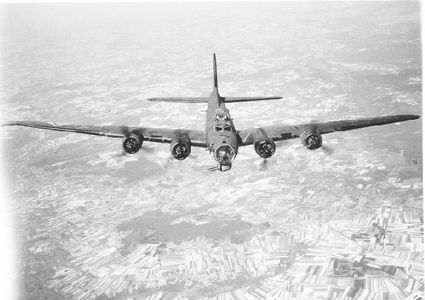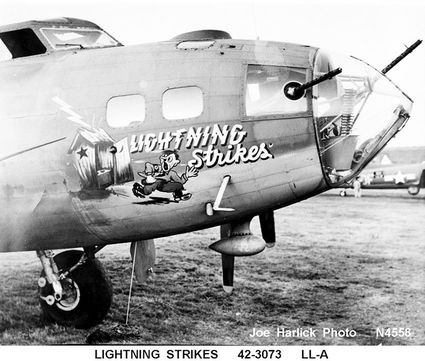Charlie Hudson, most decorated bombardier of World War II
Short Flights
On July 13, 2001, my husband Al and I flew over to Taft to hear Lt. Col. Charles S. "Combat" Hudson, U.S. Army Air Corps, the most decorated bombardier of World War II, give his last presentation in California. He was moving away to be closer to family and to participate in a new adventure, a research program to fight his battle with Parkinson's disease. What a distinct honor to shake hands with one of America's heroes from World War II history. Al took a picture of me with Charlie Hudson.
Charlie passed away on August 20, 2011, just two weeks shy of his 96th birthday.
Born Sept. 4, 1915, to a large ranching family in Wyoming, Charlie's father was a partner with the Governor of Wyoming in a cattle ranch. After a bitter dispute between the partners, the family sold everything they had and moved to the rich California oil fields in Taft. Charlie's father went to work for Standard Oil and Charlie worked as a roughneck in the oil field. He lettered in football, basketball and golf at Taft High School (1934 graduate) and Taft Junior College. As a teenager, Charlie worked as a butcher; he washed airplanes in his spare time for extra money and stick time. He loved flying.
Hudson wrote a book (COMBAT He Wrote) that details his life in Kern County as a student, a butcher and oil driller, a pro boxer, pro golfer and his experiences in the Army Air Corps as a bombardier with the 91st Bomb Group.
It's hard to believe that one person could encompass so many careers in one life. During his military career he was recommended for a Congressional Medal of Honor, awarded a Distinguished Service Cross, a Distinguished Flying Cross with three clusters, several Air Medals and three Purple Hearts for injuries received in combat. He also received the Croix de Guerre from France, that nation's highest honor.
Charlie said in his book, "Uncle Sam didn't understand, probably didn't even have time to care that much, but my dream was to become a pilot!" He had accumulated hundreds of hours in single engine and multi engine aircraft as a civilian, and was sent to Santa Ana, Calif. for flight training. He was older and didn't get on well with the military flight instructors. He was eventually sent to Hemet and flew the Ryan trainer, also known as the "Maytag Messerschmidt." Finally, he trained at Minter Field in Shafter. He was washed out of flight training due to some colorful disagreements and a "left jab, right cross combination" with an arrogant flight instructor. He believes being placed in bombardier school probably saved his life in a roundabout way.
Charlie talks and writes well for men, using a lot of descriptive expletives that I cannot put in this article, but I'm sure you get the picture.
Charlie told us story after story about his experiences flying in a B-17 that carried the name "Lightning Strikes" in the 91st Bomb Group, 8th Air Force.
High over Germany, anti-aircraft hit into one of the B-17's engines just before they had the chance to drop their bombs on the Focke-Wulf factory at Anklam. They continued the mission, successfully dropped the bombs and hit the target, but then took a hit from fighters and ground artillery. Charlie was hit twice while at the twin 50s in the nose, gave himself a shot of morphine and went back to the guns and began firing.
Just when you would think things couldn't get worse, they did. Flak tore through the nose station of the badly damaged B-17 and threw Charlie to the floor yet again. He was wounded a second time when a piece of flak ripped into his shoulder.
With both sleeves of his flight jacket soaked in blood, two JU-88s came in for the kill, the last can of ammunition was sent up to the twin 50s in the nose turret where Charlie was. As he watched the Norwegian coast pass beneath them, only 75-feet above the water, one German fighter came in from the rear. The German pilot streaked the sleek JU-88 right over the B-17. He must have thought the crew was out of ammunition and wanted to attack from the front, but Charlie said, "I was able to stitch the belly of the German fighter from nose to tail with the twin 50s". There was no time for elation over their kill, because they still had to limp home.
The crew learned later that they were the only plane from their squadron to return from Mission Number Four. Pilot Bud Evers had just reached his nineteenth birthday and within a year became the oldest surviving pilot in the squadron.
Charlie Hudson received the Distinguished Service Cross for that rugged mission over Anklam. "Eighty percent of the B-17s sent out to fight in WWII were lost," said Charlie. The staggering statistics of losses are difficult for my mind to grasp.
When World War II ended, Charlie returned home to a "Hero's Welcome" in Taft. The people of Taft presented Charlie with a parade and something else he said he wanted when he came home. They bought him a restaurant bar. It was his free and clear, in appreciation for his service and love of country. It was so appropriate that his last presentation was held there.
See you on our next flight!






